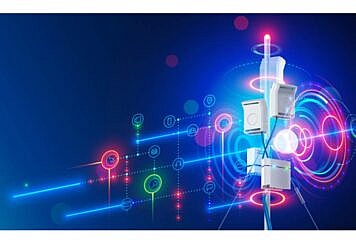With the rapid advancement of deepfake technology in recent years, there is a growing concern about its potential to manipulate videos and images for nefarious purposes. While much of the focus has been on using deep fakes in political propaganda or disinformation campaigns, another, more sinister threat often overlooked is the manipulation of our memories.
Deepfakes can be used to create false memories, altering our perceptions of reality and eroding our ability to trust what we see and remember. ExpressVPN’s study shows the dangers of deep fake-derived memories and the impact they can have on individuals and society as a whole.
Our recollections are an important fragment of who we are. They help us make sense of the world around us and inform our decisions about the future. But what if our memories were not entirely our own? What if they had been manipulated or fabricated?
The Impact of Deepfakes
As deepfake technology continues to advance, the likelihood of this scenario is increasing. Deepfakes utilize artificial intelligence and machine learning algorithms to manipulate facial expressions and movements, allowing one person’s face to be superimposed onto another person’s body in videos. This technology is incredibly realistic and can potentially be used to create fake news, propaganda, and even manipulate an individual’s memories.
Consider a scenario where a deepfake video is produced to show an individual committing a crime. Once this video is widely shared on social media, it gains traction and is viewed by a large audience. Even though the crime was never committed and the video was entirely fabricated using deepfake technology, it becomes ingrained in the collective memory of those who viewed it, resulting in a distorted perception of reality.
That is not a hypothetical scenario. In 2019, researchers at the University of California, Irvine, conducted a study in which they created a deepfake video of former President Barack Obama delivering a speech he had never actually given. The researchers then showed the video to a group of participants, who later reported remembering seeing the speech on the news. This study illustrates how easy it is to manipulate a person’s memory using deepfake technology.
How To Identify And Protect Yourself From Deepfake Manipulation
Deepfake manipulation is becoming an increasingly common and concerning issue in today’s digital age. To protect yourself from falling victim to this type of manipulation, it’s important to identify deepfakes when you see them. Some common signs of a deepfake include unnatural facial movements or expressions, audio or video quality inconsistencies, and unrealistic or out-of-context content.
To protect yourself from deepfakes, there are several steps you can take. Firstly, it’s important to be cautious about who you share personal information with online, as this information can be used to create convincing deepfakes. Secondly, it’s a good idea to fact-check any information that seems suspicious or too good to be true before sharing it with others. Lastly, utilizing artificial intelligence tools designed specifically for detecting deepfakes can help you stay ahead of the curve and avoid falling victim to this type of manipulation.
Solutions Against Them
The threat posed by deepfake-generated memories goes beyond individual instances of misinformation and could have grave consequences for the criminal justice system. A deepfake video may be employed to accuse an innocent person wrongly or to acquit a guilty one. In cases where many people are convinced that they witnessed an event, correcting the resulting harm to an individual’s reputation and life may prove challenging.
So, what can be done to protect ourselves from the danger of deep fake-derived memories? One solution is to become more aware of the potential for deepfakes to be used to manipulate our memories. It is important to be cautious when viewing videos online and to fact-check information before believing it to be true.
Another solution is to invest in technologies that can detect deepfakes. Researchers are currently developing algorithms and tools to detect deepfake videos and images. These technologies will become increasingly important as deepfake technology continues to advance.
Conclusion
The dangers of deep fake-derived memories cannot be overstated. With the increasing sophistication of deepfake technology, it has become easier than ever to manipulate videos and images to create false memories. This has serious implications for individuals, society, and even democracy itself. We must remain aware of the potential harm caused by deepfakes and take proactive steps to protect ourselves. By investing in new technologies, educating ourselves about the dangers of deepfakes, and promoting critical thinking, we can work to prevent the manipulation of our memories and safeguard the integrity of our collective consciousness. Ultimately, it is up to all of us to stand up against the dangers of deep fake-derived memories and ensure that our memories remain our own.
Follow TechStrange for more Technology, Business, and Digital Marketing News.





